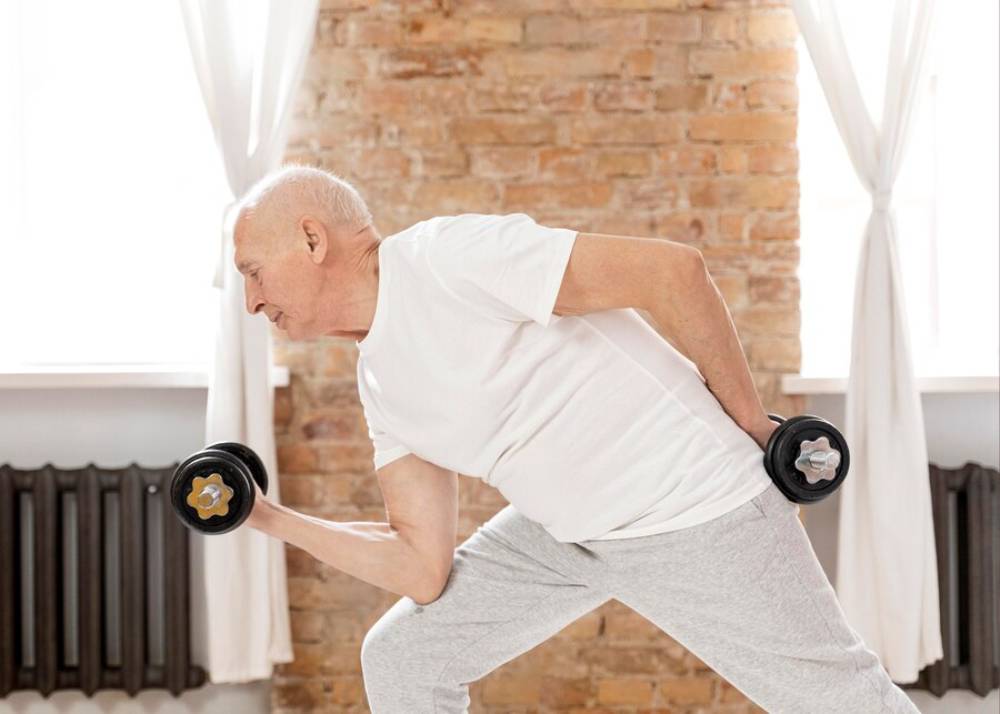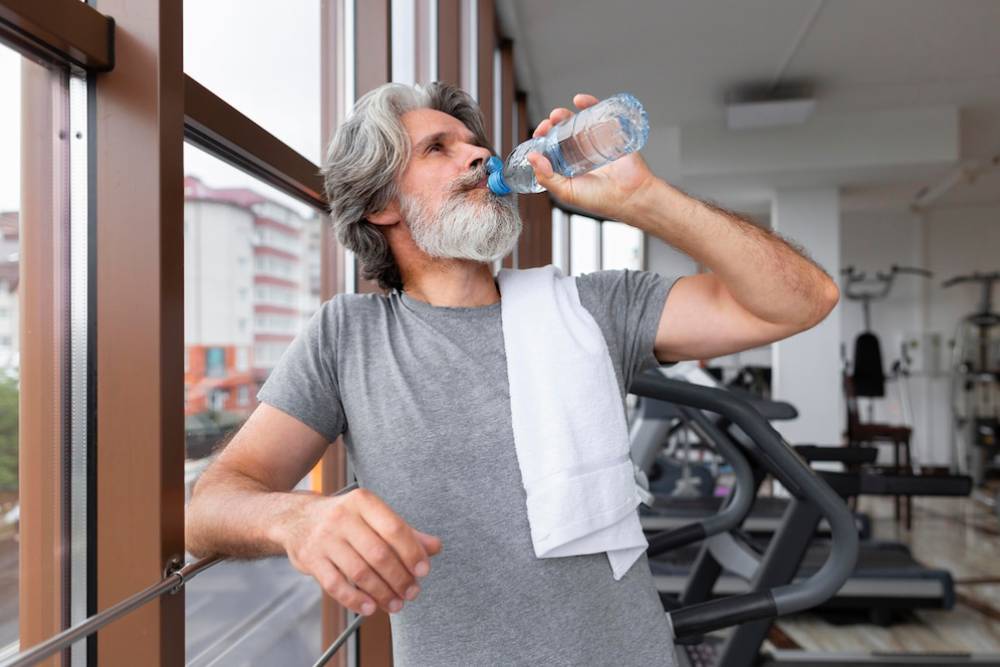
Strength Training Tips for Older Adults: A Comprehensive Guide to Age-Appropriate Workouts
As the years go by, staying healthy is crucial. Strength training, often ignored by seniors, is key to wellness. This blog explores why strength training is important for older adults and offers tips for creating effective workouts. With this advice, seniors can build muscle, increase energy, and enjoy life more.
Strength training isn’t just for the spry or super fit. It’s a cornerstone of healthy ageing. This practice combats muscle loss and enhances daily activities. Sadly, many seniors shy away, lured by safety myths. Fear not! This guide will clear up those myths and give seniors useful tips for starting strength training.
Key Benefits of Strength Training for Seniors
Unleashing the power of strength training can elevate older adults fitness journeys.
Here are some key reasons seniors should consider strength training:
- Improved muscle health.
Muscle mass naturally declines as we age, a condition known as sarcopenia. Losing muscle can reduce strength, cause balance problems, and raise the risk of falls. Regular strength training helps fight this process. It promotes muscle upkeep and boosts physical abilities.
Enhanced Bone Density

Strength training is good for muscles and bones. Weight-bearing exercises help bones grow stronger, lowering the risk of osteoporosis, which worries many older adults. By doing safe workouts, seniors can boost bone density and lower fracture risk.
Better Balance and Coordination
Falls lead to many injuries in older adults. But don’t worry! Strength training is your best friend here. It improves balance and coordination. This pair helps lower fall risks and boosts stability. Focus on lower body exercises, like squats and leg presses, to enhance your balance.
Increased Metabolism and Weight Management
Muscle tissue burns calories, even at rest. Strength training helps seniors build muscle like artisans. This increase in muscle boosts their metabolism and aids in weight management. By gaining strength, they reduce the risk of obesity-related health problems.
Enhanced Mental Health and Cognitive Function
Regular exercise, such as strength training, can improve mental health. It also helps with thinking skills. Exercise releases endorphins, which can alleviate symptoms of depression and anxiety. Additionally, it promotes neuroplasticity, potentially reducing the risk of cognitive decline.
Step-by-Step Guide to Age-Appropriate Workouts
Designing a strength training routine for older adults needs careful thought. Here’s a step-by-step guide to crafting effective, safe, and enjoyable workouts:
Consult with a Healthcare Professional

Before starting any new exercise program, seniors should talk to a healthcare professional. A doctor or physiotherapist can assess their health and suggest safe, helpful exercises.
Start with a Warm-Up
Warming up is essential to prepare the body for exercise and reduce the risk of injury. A gentle warm-up can start with five to ten minutes of walking. Then, do some dynamic stretches to boost blood flow and flexibility.
Focus on Major Muscle Groups
When creating a strength training routine, target all major muscle groups. This includes the legs, back, chest, arms, and core. This ensures balanced muscle development and comprehensive strength gains.
Use Age-Appropriate Equipment
Using the right equipment can make a significant difference for seniors. Resistance bands, light dumbbells, and bodyweight exercises are great choices. They provide resistance while being easy on the joints.
Prioritise Proper Form Over Weight
Keeping good form is key. It helps prevent injuries and boosts the benefits of every exercise. Seniors should focus on performing movements correctly. They can slowly increase resistance as they gain comfort and confidence.
Incorporate Functional Exercises
Functional exercises copy daily movements and help seniors perform everyday tasks better. Examples include sit-to-stand exercises, step-ups, and reaching movements that enhance mobility and coordination.
Allow Adequate Rest and Recovery
Rest and recovery are key to any fitness plan, especially for older adults. Seniors should take at least one rest day between strength training sessions. This helps muscles recover and grow.
Additional Expert Tips & Common Mistakes to Avoid
The basics of strength training are key. However, knowing advanced tips and avoiding common mistakes can improve your workout.
Stay Consistent
Consistency is key to achieving long-term results. Seniors should do strength training two to three times a week. As they get fitter, they can increase the intensity and duration.
Listen to Your Body
Older adults should listen to their bodies and change their workouts as needed. If an exercise causes pain or discomfort, it should be modified or avoided. Seniors should always prioritise safety and comfort.
Avoid Overtraining
While consistency is essential, overtraining can lead to injuries and burnout. Seniors should avoid overdoing it and take enough breaks between sessions.
Stay Hydrated

Hydration is often overlooked but is crucial for optimal performance and recovery. Seniors need to drink enough water before, during, and after workouts. This helps them stay hydrated and supports their muscle function.
Advanced Insights and Expert Recommendations
To boost your strength training, check out these expert tips:
Consider Personal Training
Teaming up with a certified personal trainer focusing on senior fitness gives you tailored support. A trainer can create a program tailored to your needs and goals, ensuring safe and effective progress.
Explore Group Classes
Group exercise classes for older adults provide a fun and supportive space. Senior yoga, Pilates, and circuit training offer fun options. They also help build strength and flexibility.
Monitor Progress
Tracking progress can motivate seniors and help them stay committed to fitness. Tracking workouts, seeing gains in strength and endurance, and celebrating milestones boost confidence. This encourages ongoing effort.
Conclusion: Embracing Strength Training for a Healthier Future
Strength training is an invaluable component of a healthy lifestyle for older adults. By following these tips, seniors can gain many physical and mental benefits. Age-appropriate workouts help with muscle maintenance and boost cognitive function. Remember, it’s never too late to start. By embracing strength training, older adults can lead more active, fulfilling lives.
Are you ready to embark on your strength training journey? Begin now and feel how exercise can improve your life.